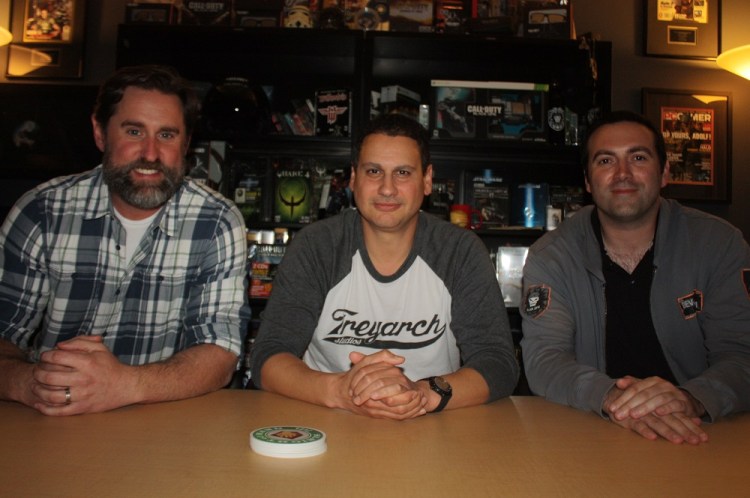GamesBeat: The idea to go to this more spatially open design, was that in any direct response to people who’ve spoken out saying that modern shooters are too enclosed, too on-rails?
Blundell: I love game design. I love game creation. I also love storytelling. It’s a fine balance to hit between those. With Black Ops III’ campaign, I think we’re delivering one of the finest Black Ops campaign stories ever. We’re also making a true gamers’ game, a game you can invest in and enjoy every moment of the gameplay, every time you come in and play it again.
Yes, of course we get feedback about how it should be more this or more that. I feel like we’ve struck a nice balance, though. If you’re a gamer, the customization, the co-op online play, all that stuff, you can jump in there and enjoy that. If you’re more heavily into the narrative, we’ve woven that in seamlessly as well.
Lamia: We have those open areas, but we clearly also have areas where we just want to tell you a story and immerse you in the universe. That’s why we showed that level that way. There are clearly two completely different — there’s that opening area where we just wanted to tell you some story and immerse you. “Look, you’re in this other person’s war. They have the asset you’re there for.” It’s okay to still tell a story and have these nicely scripted scenes with all the detail and the tons of animation we invest in that do those kinds of setups and tell a story. It’s OK to have smaller area battles as well, but we’re going to have big area battles. There’s a combination of all that that makes it all work together.
Blundell: Campaign is about trying to get a pace right. There’s only so much story you can tell with a voice coming out while you’re running around shooting people in the face. There are moments where we have to slow it down, let you take in the environment, things like walking through Ramses station seeing the massacre and destruction. There are other moments where we want to slow it down and do an interpersonal moment, build up a relationship between characters, or create the feeling we want you to have before we give you a weapon or put you in a situation that’s going to be death-defying. It marries all those things together.
One thing that might not have been clear in the video is that there are a couple of time-skips in there as well. That’s only a partial bit of that level, just in the interests of time.
GamesBeat: Are there any more things that you changed because of feedback from Black Ops II? I remember a pretty easy scope, I think, and the electroshock charge weapons that could stop somebody cold when they snuck up on you.
Bunting: There was some controversy around the shock charges tripping C4, and things like sniper scopes are a tricky balance. They come up every game. At the end of the day you have to make sniping a viable option for people to choose. It has to feel good when you do it. But you also have to find that perfect balance, that sliver of a place where it can sit without becoming too overpowered.
Not only do we listen to feedback, but we changed the weapons post-launch in Black Ops II, for the first time. We were always hesitant to change weapon balance post-launch. But with Black Ops II we were tweaking, looking at stats, listening to the community. The community might say one thing about a weapon, but then you pull the stats up, and they tell you a different story.
We have a philosophy here where we always listen to the human, emotional response. That’s important. That’s perception. But we also validate that by looking very closely at the statistics. We did a lot of analysis on statistics with Black Ops II. That’s something we continue as part of our development methodology.
GamesBeat: Were there any big changes from that?
Bunting: Right now everything is in a fluctuating state. We’re going to be fine-tuning the balance of the weapons all the way until ship. At this point we’re still listening to the emotional feedback and making sure that they all feel like they have a place. That’s another way we treat weapon design. We want everything to have a big personality. Each weapon has its own character, its own profile, its own personality. Right now we’re dialing in where they sit on the spectrum. But they’re definitely not tuned and balanced at this point. When we get to the place where sniper scopes are dialed in, it’s absolutely going to be something we listen to the community about.
VentureBeat's mission is to be a digital town square for technical decision-makers to gain knowledge about transformative enterprise technology and transact. Learn More



